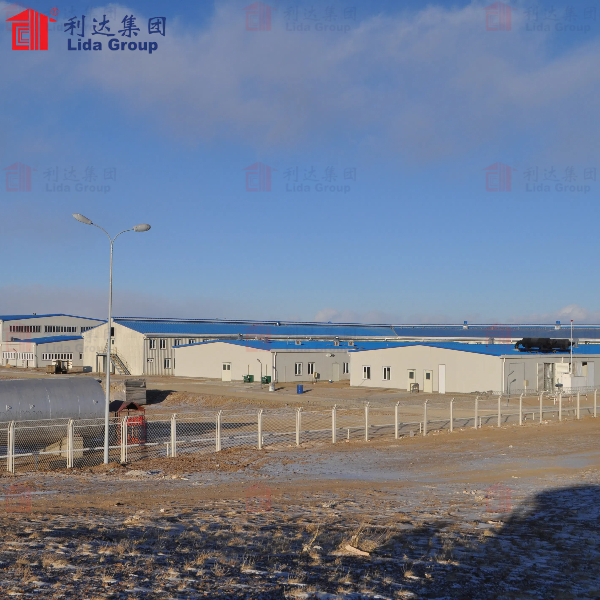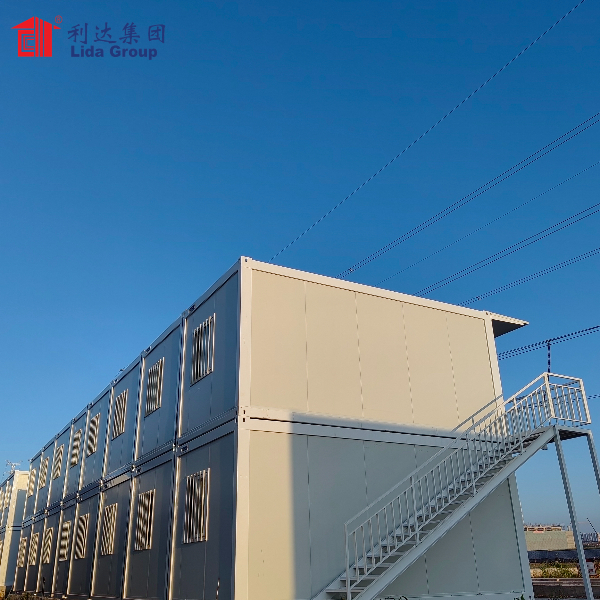In today’s globalized economy, industries such as construction, mining, and oil and gas often require effective housing solutions for their workforce. As projects move to remote locations, the challenge of providing adequate accommodation becomes increasingly complex. Lida Group has emerged as a leader in building integrated labor camps, utilizing innovative approaches that prioritize comfort, efficiency, and sustainability. This article explores Lida Group’s methodology, benefits of integrated labor camps, and their impact on worker satisfaction and productivity.
Understanding Integrated Labor Camps
What Are Integrated Labor Camps?
Integrated labor camps are comprehensive housing solutions designed to accommodate workers on-site. These camps provide not only sleeping quarters but also essential facilities such as dining areas, recreational spaces, and administrative offices. The goal is to create a self-sufficient environment that meets the diverse needs of the workforce while promoting a sense of community.
Key Features of Integrated Labor Camps
- Modular Design: The use of modular components allows for flexibility in layout and configuration, accommodating varying workforce sizes and needs.
- Rapid Deployment: Integrated labor camps can be assembled quickly, reducing the time required for construction and enabling immediate occupancy.
- Comprehensive Amenities: These camps are equipped with modern amenities, ensuring that workers have everything they need for comfortable living.
- Sustainability: Lida Group emphasizes eco-friendly practices in the construction and operation of labor camps, promoting sustainable living.
Lida Group’s Innovative Approach
1. Needs Assessment and Planning
The foundation of Lida Group’s approach begins with thorough planning and needs assessment. Understanding the specific requirements of the workforce is crucial to developing effective housing solutions.
Workforce Analysis
Lida Group conducts comprehensive analyses to determine:
- Number of Workers: Estimating the workforce size helps in planning the scale of the labor camp.
- Demographics: Understanding the demographics of the workers, including age, gender, and cultural backgrounds, aids in designing inclusive living spaces.
Site Evaluation
A thorough site evaluation is conducted to assess:
- Accessibility: The location’s proximity to work sites ensures minimal commute times.
- Environmental Conditions: Understanding the local climate helps in designing structures that provide comfort and safety.
2. Modular Camp Design
Lida Group utilizes modular construction techniques, which allow for quick assembly and adaptability. This approach offers several advantages:
Customizable Layouts
- Flexible Configurations: Modular units can be combined in various ways to create optimal living conditions tailored to the specific needs of the workers.
- Scalability: As projects evolve, the labor camp can be easily expanded or reduced in size, accommodating fluctuating workforce numbers.
Modern Amenities
- Comfortable Living Quarters: Each unit is designed to provide private sleeping areas, bathrooms, and common spaces, ensuring comfort and privacy for workers.
- Recreational Facilities: Integrating recreational spaces fosters community building and provides workers with opportunities for relaxation and social interaction.
3. Sustainable Practices
Lida Group is committed to sustainability in every aspect of labor camp construction and operation:
Eco-Friendly Materials
- Sustainable Sourcing: Materials are sourced from environmentally responsible suppliers, ensuring minimal ecological impact.
- Recycled Components: Wherever possible, recycled materials are used in construction, reducing waste and promoting sustainability.
Energy Efficiency
- High-Quality Insulation: Effective insulation helps regulate indoor temperatures, reducing energy consumption for heating and cooling.
- Renewable Energy Solutions: Incorporating solar panels and energy-efficient appliances minimizes reliance on non-renewable energy sources.
4. Rapid Construction and Deployment
One of the most significant advantages of Lida Group’s approach is the speed of construction:
Off-Site Manufacturing
- Controlled Environment: Modular components are manufactured in a factory setting, allowing for better quality control and minimizing delays caused by weather or site conditions.
- Quick Assembly: Once transported to the site, the components can be assembled rapidly, often within days, minimizing disruption to ongoing operations.
5. Comprehensive Support Services
Lida Group goes beyond just providing housing; they offer a range of support services to ensure the well-being of the workforce:
Catering and Dining Facilities
- Nutritious Meals: On-site catering services provide balanced meals, ensuring workers receive the nutrition they need to perform effectively.
- Dining Areas: Comfortable dining spaces foster social interaction and community among workers.
Health and Wellness Services
- Medical Facilities: Basic medical services and first aid are provided on-site to address health concerns promptly.
- Mental Health Support: Programs promoting mental well-being help workers manage stress and maintain a healthy work-life balance.
Benefits of Integrated Labor Camps
1. Improved Worker Satisfaction
Comfortable living conditions are essential for worker morale:
- Quality of Life: Providing modern amenities and recreational facilities enhances the overall quality of life for workers, leading to higher job satisfaction.
- Sense of Community: Shared spaces and communal activities encourage camaraderie among workers, fostering a positive work environment.
2. Increased Productivity
Worker productivity is closely linked to living conditions:
- Reduced Absenteeism: Comfortable accommodations lead to lower absenteeism rates, as workers are more likely to feel content and healthy.
- Enhanced Focus: Reduced commute times and comfortable living arrangements allow workers to focus more on their tasks, improving overall productivity.
3. Cost-Effectiveness for Companies
Investing in integrated labor camps can lead to significant cost savings:
- Lower Operational Costs: By providing on-site housing, companies can reduce travel expenses and logistical challenges associated with housing workers off-site.
- Efficient Resource Management: Integrated camps streamline the management of resources, including food, healthcare, and utilities.
4. Flexibility and Adaptability
The nature of many industrial projects requires flexible housing solutions:
- Scalable Solutions: As projects evolve, labor camps can be expanded or modified to accommodate changing workforce needs.
- Quick Relocation: If the project site changes, the modular nature of the camp allows for easy relocation without extensive delays.
Case Studies: Successful Integrated Labor Camp Projects
Case Study 1: Construction Project in Remote Area
Challenge: A major construction firm needed a labor camp to house workers for a large infrastructure project in a remote location.
Solution: Lida Group provided an integrated labor camp solution featuring modular living units, dining facilities, and recreational areas.
Outcome: The project was completed ahead of schedule, and worker satisfaction significantly improved, leading to increased productivity and reduced turnover rates.
Case Study 2: Mining Operations Support
Challenge: A mining company required temporary housing for its workforce in a challenging environment with limited infrastructure.
Solution: Lida Group designed and constructed a modular labor camp tailored to the needs of mining workers, with comfortable accommodations and communal spaces.
Outcome: The camp facilitated a supportive living environment, resulting in higher morale and productivity among workers.
Case Study 3: Oil and Gas Industry Housing
Challenge: An oil company needed a rapid deployment housing solution for workers stationed in a remote area.
Solution: Lida Group constructed an integrated labor camp with all necessary amenities, ensuring quick assembly and relocation.
Outcome: The camp enabled the company to efficiently manage its workforce, significantly reducing operational costs and improving overall project timelines.
The Future of Integrated Labor Camps
Trends Shaping the Industry
The future of integrated labor camps will be influenced by several key trends:
1. Increased Demand for Sustainable Practices
As environmental awareness grows, industries are under pressure to adopt sustainable practices:
- Eco-Friendly Solutions: Companies prioritizing sustainability will appeal to a growing market of environmentally conscious consumers.
- Regulatory Changes: Governments may implement stricter regulations on environmental impact, driving the need for sustainable labor camp solutions.
2. Technological Advancements
Advancements in technology will enhance the efficiency of integrated labor camps:
- Smart Technologies: The integration of IoT devices will enable real-time monitoring and optimization of living conditions and resource usage.
- Automation: Automation in construction processes can improve efficiency and reduce labor costs.
3. Customization and Modularity
The demand for customizable and modular designs will continue to grow:
- Flexible Accommodation Solutions: Businesses will increasingly require integrated labor camps that can be easily adapted to changing operational needs.
- Rapid Deployment: Prefabricated solutions will allow for quick construction and minimal disruption, catering to the fast-paced demands of modern industries.
Lida Group’s Commitment to Innovation
Lida Group remains dedicated to leading the charge in integrated labor camp design:
- Research and Development: Continuous investment in R&D ensures that Lida Group remains at the forefront of technological advancements in labor camp construction.
- Client Collaboration: By working closely with clients, Lida Group can develop tailored solutions that meet specific operational requirements and sustainability goals.
Conclusion
Integrated labor camps designed by Lida Group represent a significant advancement in providing efficient and comfortable living solutions for workers. Their focus on modular design, comprehensive amenities, and sustainability makes them an ideal choice for various industries, from construction to mining and oil and gas.
As the demand for temporary and semi-permanent worker accommodation continues to grow, Lida Group is well-positioned to deliver innovative designs that meet the evolving needs of the industry. The future of integrated labor camps is bright, and Lida Group is at the forefront of this transformation, helping businesses optimize their operations while promoting worker well-being.
In an era where flexibility and sustainability are paramount, Lida Group’s commitment to excellence ensures that integrated labor camps will play a crucial role in shaping the future of worker accommodation. Through strategic investments and a focus on customer satisfaction, Lida Group is enhancing operational capabilities for its clients and contributing to the evolution of the construction industry as a whole. The journey toward a more efficient and sustainable future in worker accommodation is just beginning, and Lida Group is leading the way.
Contact Us
Post time: May-20-2025


